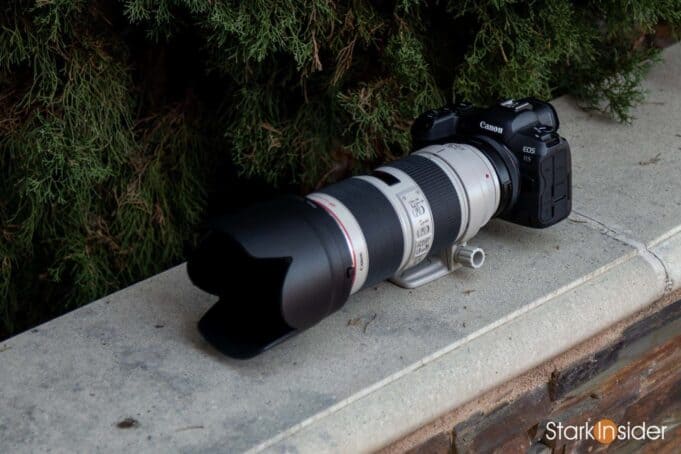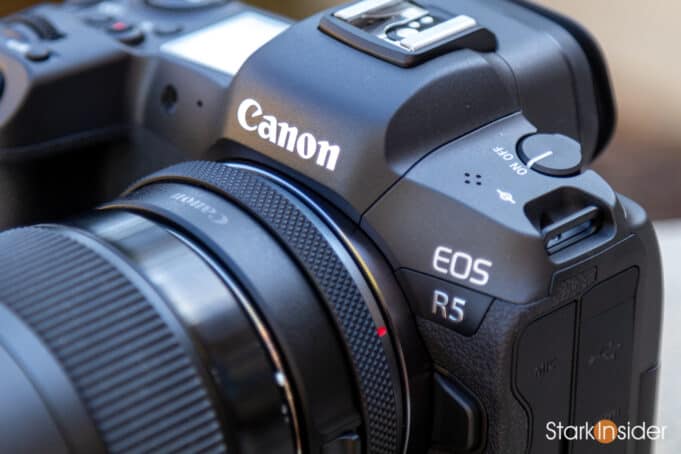At least according to one data source Canon and Sony cameras and lenses are dominating the competition.
Lensrentals has released its annual report summarizing the most popular rental gear. As usual, the rental house segments the findings in a variety of ways that makes for interesting reading for those that follow the (shrinking) camera market.
In an opening note Lensrentals notes that “most of the industry has migrated over to mirrorless platforms” which they say has resulted in interesting statistics and trends.
Here’s a few of the key highlights from the blog post.
Most popular photography and videography gear of 2023:
- Canon EOS R5
- Canon RF 28-70mm f/2L
- Canon RF 70-200mm f/2.8L IS
- Sony Alpha a7S III
- Sony FX6
Camera brand market shares:
- Canon 33.39% (-7.08%)
- Sony 32.67% (4.81%)
- Blackmagic 5.22% (-9.46%)
- Nikon 5.59% (4.09%)
- Panasonic 4.59% (8.50%)
Lens brand market shares:
- Canon 37.61% (1.42%)
- Sony 20.47% (5.38%)
- Sigma 8.69% (-9.34%)
- Nikon 8.60% (-1.37%)
- Zeiss 2.49% (-19.93%)
All of the details and commentary can be found over on Lensrentals so be sure to take a look there.
Canon and Sony Still Lead the Way

No question, Canon and Sony reign. Canon took the top 3 most popular slots for gear (EOS R5, RF 28-70mm and 70-200mm lenses) in addition to the number one position for brand share — that despite a non insignificant -7% y/y drop.
Meantime, Sony was a very close second, with two cameras in the top five in terms of popularity (Alpha a7S III, FX6) and trailing Canon for market share by 1% which might be deemed statistically insignificant in any case.
The story was the same with lenses. Canon and Sony locked in both top slots as well with others, including Sigma, Nikon and Zeiss, trailing significantly.
Caveat: A Grain or Two of Salt Applies
Of course this is just one data source from one rental house so don’t be the farm on these numbers just yet. Who knows how much Lensrentals allocates its marketing budget to various brands and programs, and even how much of various product it stocks and promotes. Also, this is likely a geo-specific result. My guess is Europe and Asia could look quite different.
Nevertheless, Lensrentals does suggest they are one of the largest rental houses in the world so the data is probably worth a dash of interest and likely credible enough to identify trends.
The Stark Insider Take
A few of my brief takeaways…
Canon has done well transitioning to the RF mirrorless lens mount — it could’ve been a disaster and no doubt fraught with risk, but Canon was able to convince camera professionals that the RF mount and lenses were here to stay. Despite high prices and a slow rollout it appears to be a success story.
Likewise, the Canon EOS R5 carries the torch for the 5D series — most Canon pros aspired for a Canon 5D. Now the mirrorless heir, the R5, is the one. As you can see in these results the R5 is the most popular rental.
Sony’s early mirrorless strategy is paying dividends — My guess is Sony has the most expansive mirrorless camera body product line-up of all the majors. Part of that has to do with getting in early. In addition to a rapid, iterating product cycle (e.g. a6000, 6300, 6500, 6600, 6700…). That combination has apparently yielded an impressive first mover advantage in the mirrorless market.
Smartphone cameras remain the not-so-hidden monster — Lurking below this sort of data it the smartphone camera, especially the Apple iPhone. Every year Apple pours a boatload of R&D into computational photography, associated apps, and, most recently, AI to bring increasingly powerful iterations of what is likely one of, if not the most, advanced pocketable camera on the market today. True, it doesn’t have an interchangeable lens mount, so most professionals will likely still want a dedicated tool. For the masses, however, it’s proving to be irresistibly powerful and convenient — and has, in my estimation, become the standard bearer for an expanding group of content creators, Vloggers and influencers.
Speaking of the iPhone, could it too become a rental item? With top end models easily pushing $2,000+ USD (similar price point for many mid-market full-frame mirrorless bodies) I wonder if there’s an emerging market for rentals? Or does Apple prohibit that in some way? I guess one problem is that you don’t simply power on a smartphone like you do a mirrorless camera. It requires setup, cloud login credentials, etc. so that could be another possible inhibitor.
Count me as one of the holdouts. With my iPhone 15 Pro Max I considered switching from my cinema bodies (RED Dragon, Panasonic GH6), but I just could not stomach the over-processed look of the iPhone footage. Great for Twitter/X, Facebook and social feeds, but utterly lacking in cinematic character (grain!). Even for a holiday trip to London I brought along a compact Sony Alpha s6000. Combined with an inexpensive manual 25mm lens I was able to get beautiful results that, in my experience, bested the iPhone (Megapixel count aside which didn’t matter for my travel photos).
RELATED:
Is the Sony Alpha a6000 still worth it?
Finally, an unfortunate prediction: many storied camera companies we know and love will eventually shut down. Most of that will be because of Apple iPhones, Samsungs and other smartphones. Perhaps there will be consolidation too, all in the name of survival. It’s going to be an interesting ride.




